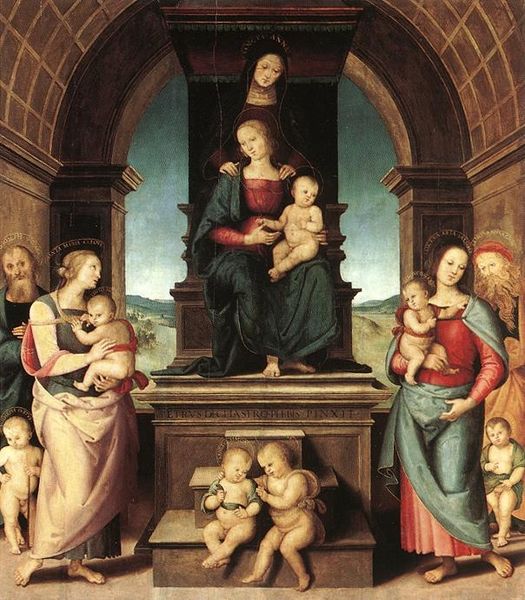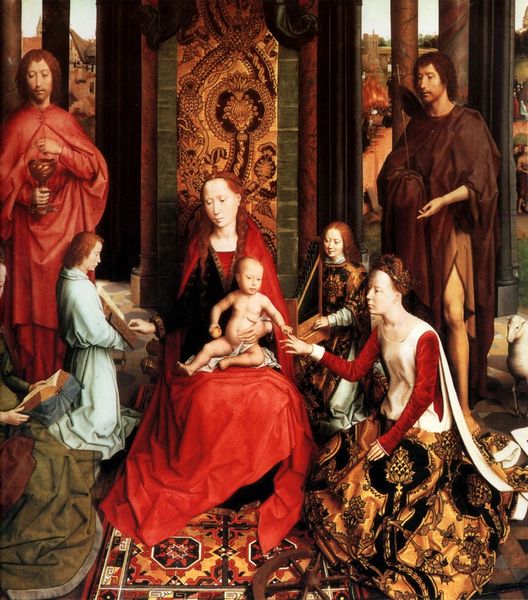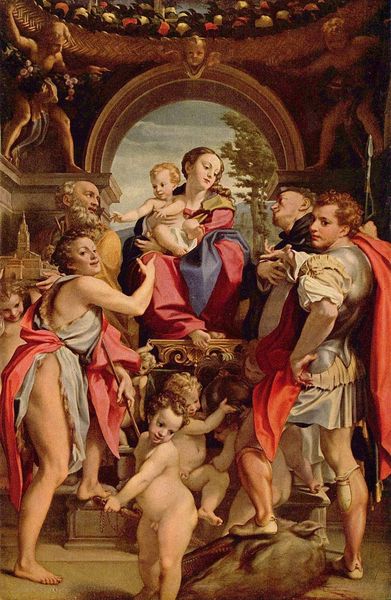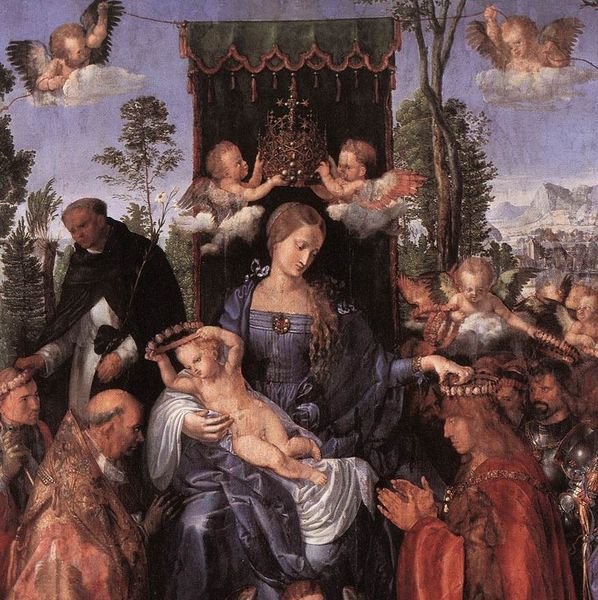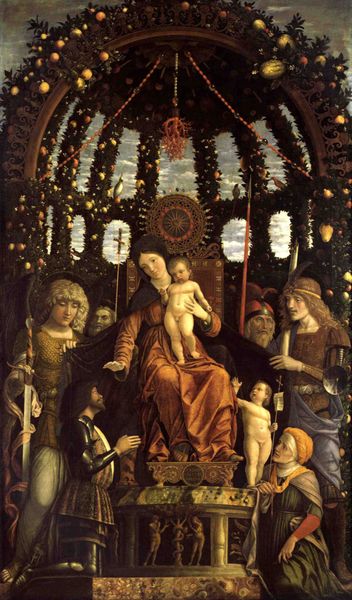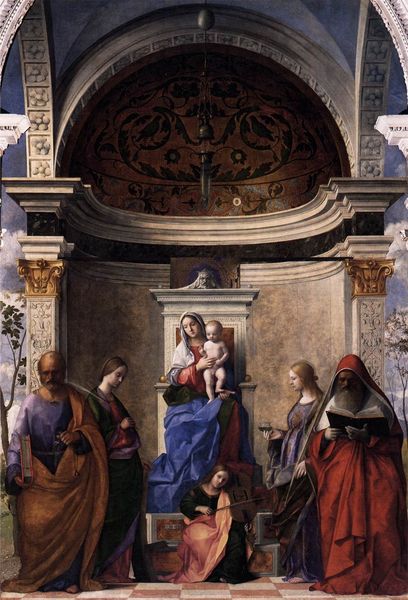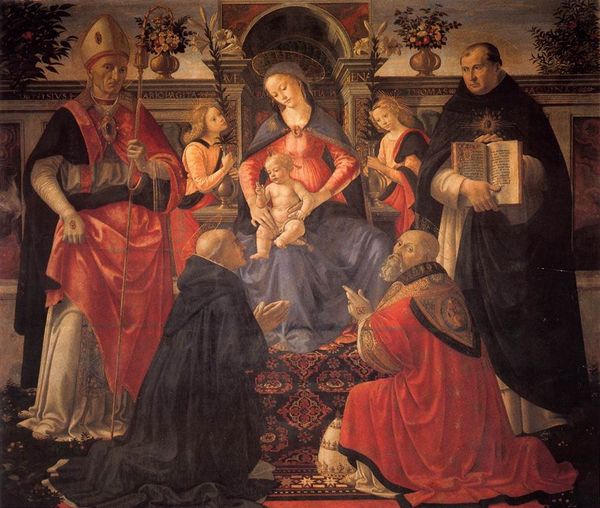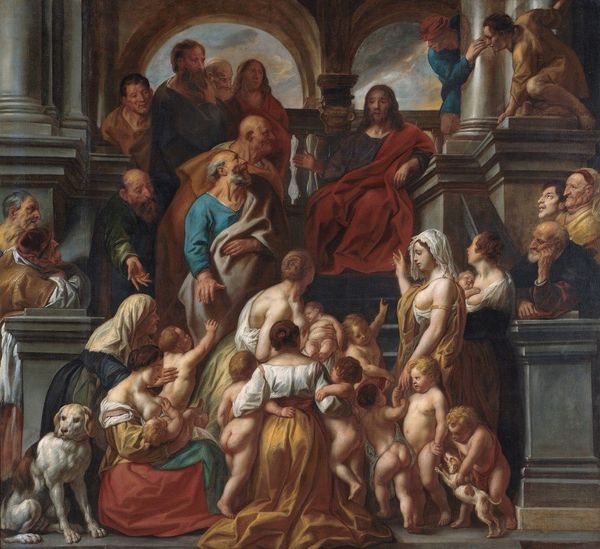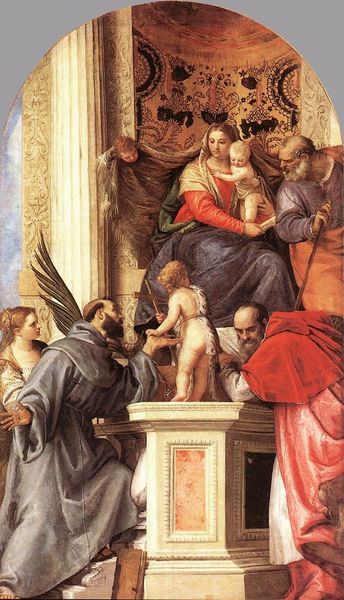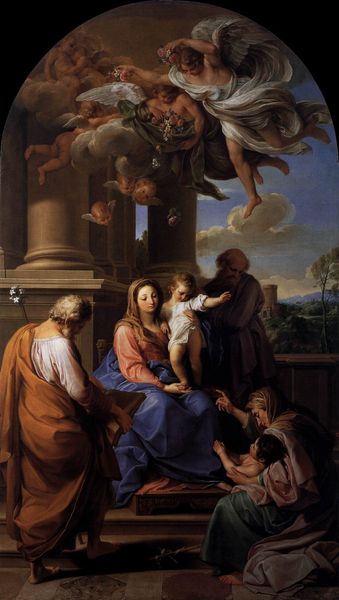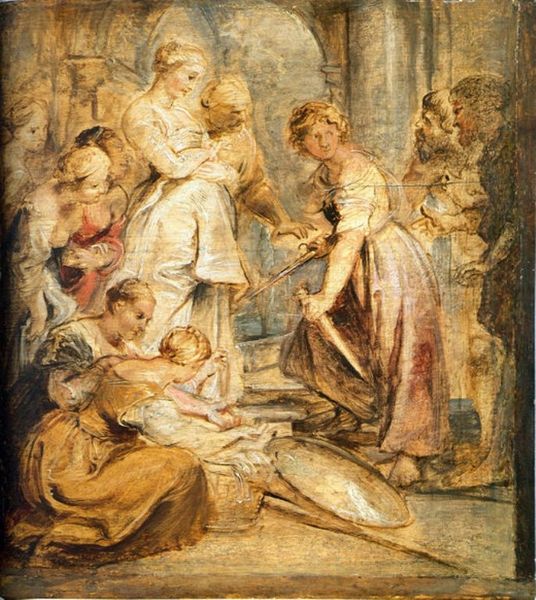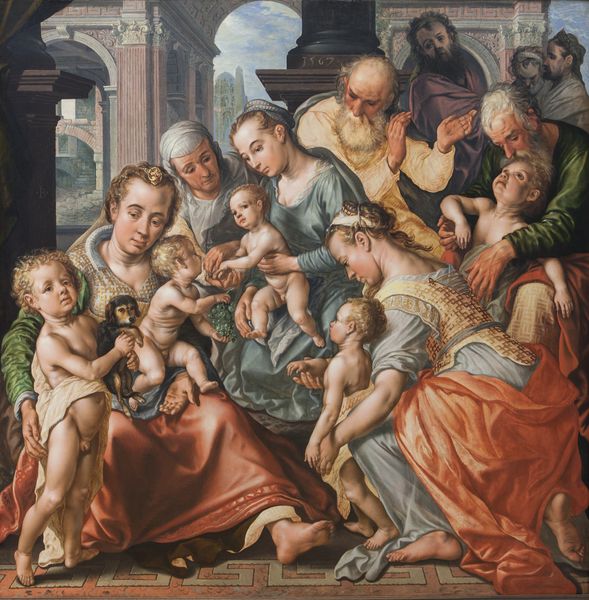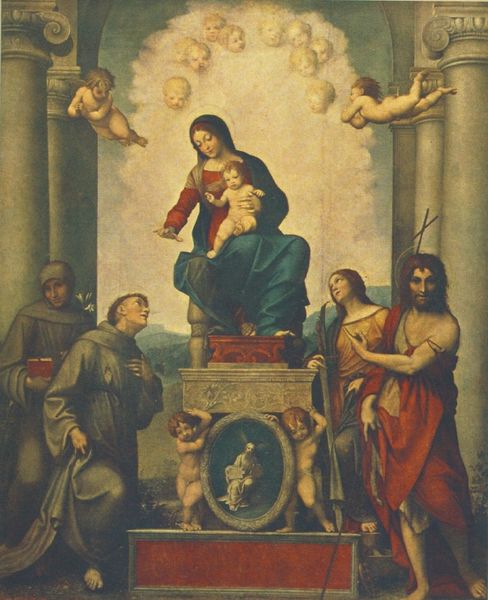
painting, oil-paint
#
high-renaissance
#
allegory
#
painting
#
oil-paint
#
figuration
#
oil painting
#
history-painting
#
italian-renaissance
Copyright: Public domain
Raphael began this oil on canvas painting, Madonna of the Baldacchino, in Florence around 1506. It presents the Virgin Mary and the infant Christ child enthroned beneath a canopy, flanked by saints. The “baldacchino” refers to the architectural canopy, a symbol of authority and sacred space. This motif, often seen in churches, elevates Mary, emphasizing the Catholic Church’s veneration of her. The figures surrounding Mary, rendered in the style of the High Renaissance, represent key figures within the church. Note how Raphael positions these figures in a naturalistic way, gesturing and looking towards the Madonna and child. He uses light and shadow to create depth, drawing the viewer into this divine assembly. Originally commissioned for the church of Santo Spirito, the painting was left unfinished when Raphael moved to Rome. Its institutional history underscores the changing artistic patronage and the influence of location on Raphael’s career trajectory. Art historians consult letters, contracts, and church records to piece together the rich context of works such as this.
Comments
No comments
Be the first to comment and join the conversation on the ultimate creative platform.
